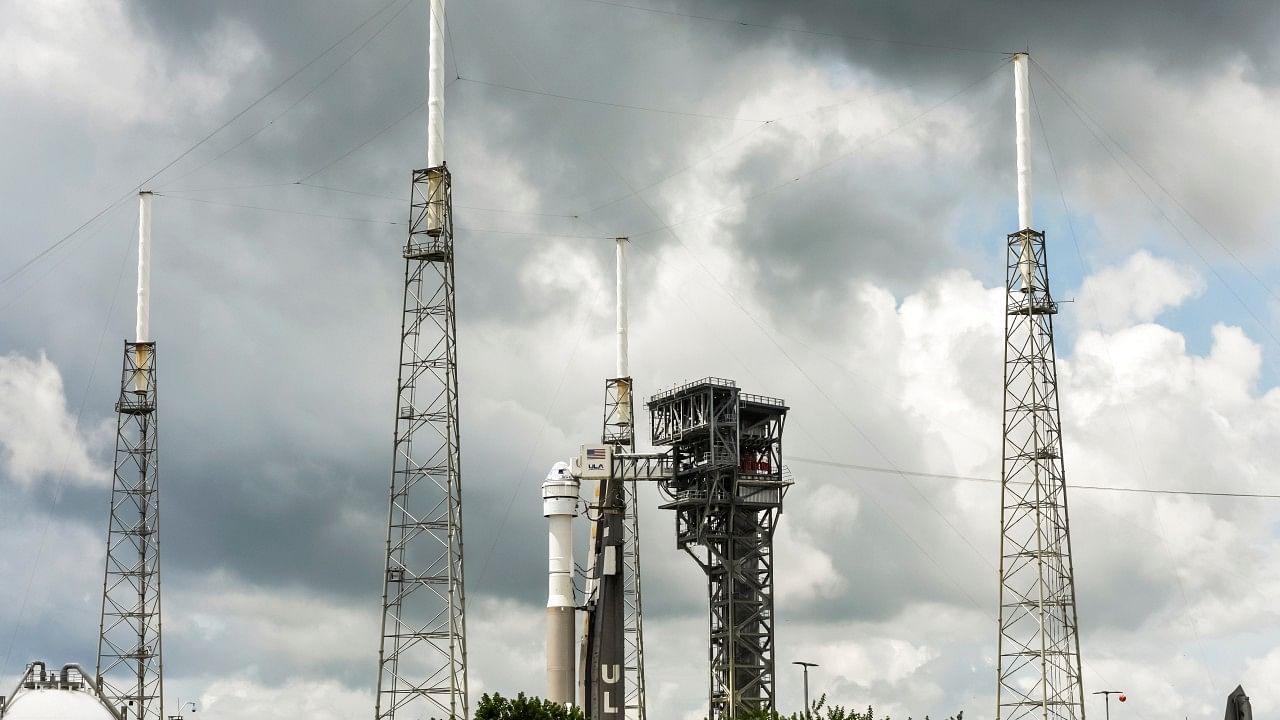
ULA’s Atlas V rocket, carrying Boeing’s CST-100 Starliner space taxi with two NASA astronauts on board, is expected to launch Monday at 10:34 p.m. local time from Florida’s Cape Canaveral complex.
Credit: Reuters Photo
Boeing Co. is poised to send astronauts to orbit using its long-delayed space capsule, a first-of-its-kind test for the embattled aerospace giant and its rocket making joint venture, United Launch Alliance LLC.
ULA’s Atlas V rocket, carrying Boeing’s CST-100 Starliner space taxi with two NASA astronauts on board, is expected to launch Monday at 10:34 p.m. local time from Florida’s Cape Canaveral complex.
This marks the first time ULA’s Atlas rocket will launch humans to space after a virtually unblemished track record in cargo transportation going back nearly two decades.
Starliner, a Hershey’s Kiss-shaped capsule, has been plagued by years of technical problems. This mission will be key to proving that Boeing can transport humans safely to space.
“The lives of our crew members, Suni Williams and Butch Wilmore, are at stake. We don’t take that lightly at all,” Jim Free, NASA’s associate administrator, said in a recent news conference.
“The most important thing we can do is protect those two people as well as our crew currently on board the space station.”
Starliner’s inaugural human spaceflight, carrying astronauts to and from the International Space Station, has taken on greater significance as Boeing navigates a leadership shake-up spawned by a safety crisis with its 737 Max 9 jet business.
A successful space mission would show Boeing can overcome engineering and quality challenges.
Boeing and Elon Musk’s SpaceX were each first awarded contracts by NASA in 2014 to create private vehicles to take astronauts to the ISS. SpaceX has been regularly ferrying passengers on its Crew Dragon since 2020.
After Boeing’s first uncrewed mission in 2019 failed to reach the ISS as planned due to a software glitch, a second attempt was delayed after a series of corroded valves wouldn’t open properly. It took until 2022 for an uncrewed Starliner to first reach the space station.
Mission for NASA to the International Space station.
Credit Bloomberg Photo
Boeing has reported around $1.5 billion in extra costs to cover Starliner delays and technical problems, and NASA called on the company to overhaul its design processes, testing and communications throughout development. But now the space agency’s safety watchdogs have determined that the program appears to be on track.
NASA has appropriate procedures “to address the challenges of this crewed flight of the Starliner”, Susan Helms, chair of NASA’s aerospace safety advisory panel and a former astronaut, said ahead of the flight.
While this test is largely focused on Starliner, this will also be the first time that a ULA rocket carries humans to space. ULA’s Atlas V rocket has had 99 previous successful launches.
Boeing is also one of two parent companies of ULA, along with rival Lockheed Martin Corp., though the companies continue to weigh offloading their stake in the Pentagon contractor, Bloomberg has reported.
No matter what happens with this launch, Boeing faces questions about the long-term vision for its space business.
The company’s space lineage stretches back more than 50 years to the iconic Saturn V that first sent men to the moon.
The firm also builds NASA’s Space Launch System rocket and maintains the ISS. Yet in the last decade it has fallen far behind the big technology leaps made by SpaceX and other “new space” firms.
It’s unclear whether Starliner will be used beyond a half-dozen more missions to the ISS for NASA. Late last year, Boeing Chief Financial Officer Brian West told a small gathering of investors that the company has a decision to make about future investment in the program, according to a person with direct knowledge of his comments who declined to be named because the meeting was private.
A Boeing spokesperson said the company has made significant investments in Starliner and will continue to fulfill its contractual obligations to NASA.
In addition, while Boeing’s Space Launch System rocket is a cornerstone of NASA’s next moonshot later this decade, it’s expected to cost about $2 billion per launch. SpaceX says it’s working on cheaper alternatives. And the ISS is heading toward retirement.
Boeing burned through $3.9 billion in the first quarter of this year as it worked to restore confidence in production of its 737 aircraft. Among other challenges, the company’s next chief executive officer and its board will need to decide how big a priority its space business should be.